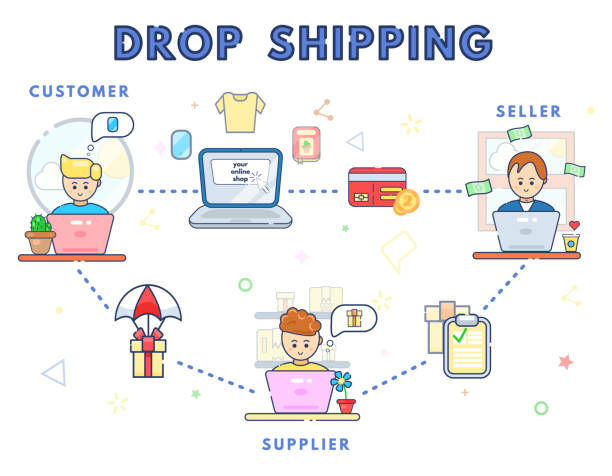Mastering Dropshipping Business: 15 Essential Tips for Beginners

Introduction
Are you intrigued by the idea of launching your own e-commerce business without the hassles of managing inventory and fulfillment? If so, dropshipping might be the perfect venture for you. This business model has gained immense popularity in recent years, and for good reason. It offers a low barrier to entry, minimal financial risk, and the potential for substantial profits. However, to succeed in dropshipping, you need to be armed with the right knowledge and strategies. In this comprehensive guide, we’ll share 15 invaluable dropshipping tips for beginners to set you on the path to success.
1. Understand the Basics
Before diving headfirst into the world of dropshipping, take the time to understand its fundamental concepts. Dropshipping is a retail fulfillment method where a store doesn’t keep the products it sells in stock. Instead, the store purchases the product from a third party and has it shipped directly to the customer. This means you’ll never have to worry about storing, packaging, or shipping products.
2. Choose the Right Niche
Selecting the right niche is the foundation of a successful dropshipping business. Consider your interests, trends, and the target audience. A niche that’s too broad can lead to stiff competition, while an overly specific niche may limit your customer base. Striking the right balance is key.
3. Research Your Market
To find success in dropshipping, research your chosen niche thoroughly. Analyze your competitors, identify customer demographics, and understand the pain points and desires of your target audience. This research will help you tailor your product selection and marketing strategies.
4. Find Reliable Suppliers
Your choice of suppliers is critical. Look for reliable suppliers with a track record of delivering quality products on time. Websites like AliExpress, SaleHoo, and Worldwide Brands are popular platforms for finding trustworthy suppliers.

5. Focus on Quality Products
Quality trumps quantity in dropshipping. Select products that offer real value to your customers. Test the products you intend to sell and ensure they meet your standards for quality and durability.
6. Create a Professional Online Store
Your online store is the face of your dropshipping business. Invest in a user-friendly and professional website. Use platforms like Shopify, WooCommerce, or BigCommerce to build your store. Ensure it is easy to navigate and visually appealing.
7. Optimize Product Listings
Craft compelling and detailed product descriptions. Highlight the benefits of the product and address potential concerns. Include high-quality images and videos, and make sure product listings are SEO-friendly.
8. Pricing Strategy
Price your products competitively, but don’t engage in a race to the bottom. Consider your costs, including product price, shipping, and marketing expenses. Remember to factor in a reasonable profit margin.
9. Shipping Considerations
Clearly communicate shipping times and costs to customers. Set realistic expectations and be transparent about any potential delays. Offer multiple shipping options to cater to various customer needs.
10. Effective Marketing
Marketing is the lifeblood of your dropshipping business. Utilize a mix of strategies, including social media marketing, content marketing, and email marketing. Paid advertising, such as Facebook Ads and Google Ads, can also boost your reach.
11. Customer Service
Exceptional customer service is essential for building a loyal customer base. Be responsive to inquiries, address issues promptly, and go the extra mile to satisfy your customers.
12. Order Tracking
Implement order tracking to keep customers informed about the status of their orders. This transparency builds trust and reduces inquiries about order status.
13. Stay Informed
The e-commerce landscape is dynamic and ever-changing. Stay updated on industry trends, algorithm updates, and customer preferences. Being adaptable is key to long-term success.
14. Test and Iterate
Don’t be afraid to experiment with different products, marketing strategies, and pricing models. Use analytics tools to track the performance of your store and make data-driven decisions.
15. Legal Compliance
Ensure your dropshipping business complies with all relevant laws and regulations, including consumer protection laws, tax requirements, and intellectual property rights.
Dropshipping is a popular e-commerce business model that offers both advantages and disadvantages. It’s important to understand the pros and cons of dropshipping before deciding if it’s the right business model for you.
Pros of dropshipping:
- Low Initial Investment: One of the most significant advantages of dropshipping is the low barrier to entry. You don’t need to invest in inventory, warehousing, or manufacturing, which significantly reduces your upfront costs.
- Minimal Risk: Since you’re not purchasing products upfront, you won’t be stuck with unsold inventory. This reduces the financial risk associated with traditional retail businesses.
- Flexibility and Location Independence: You can run a dropshipping business from anywhere with an internet connection. This flexibility allows you to travel or work from home.
- Wide Product Selection: Dropshippers can offer a wide variety of products without the need for physical storage space. This versatility enables you to test different niches and products easily.
- Easy to Scale: Scaling a dropshipping business is relatively straightforward. As your business grows, you can add more products or expand into new markets with minimal extra effort.
- Time Efficiency: With no need to handle inventory or ship products, you can focus on marketing and growing your business, saving time on logistical tasks.
Cons of dropshipping:
- Low-Profit Margins: Because dropshipping is highly competitive, profit margins can be slim. Many other drop-shippers may sell the same products, leading to price wars.
- Supplier Dependency: You rely on your suppliers to fulfill orders and maintain product quality. If they run out of stock or face logistical issues, your business can be impacted.
- Quality Control: You may not have control over the quality of the products you sell. If a customer receives a subpar product, it can reflect poorly on your business.
- Shipping Challenges: Longer shipping times, especially from international suppliers, can lead to customer dissatisfaction. Some customers may not be willing to wait, and this can result in lost sales.
- Inventory Issues: You can’t control stock levels, which means a supplier could run out of a popular product. This can lead to inconsistencies in product availability.
- Brand Building Challenges: Building a unique brand can be challenging in the dropshipping model since you’re selling products that many others may also offer. Creating a strong brand identity is crucial to standing out.
- Customer Service Demands: Handling customer inquiries, returns, and issues can be time-consuming. You’ll need to provide excellent customer service to maintain a positive reputation.
Conclusion: While dropshipping offers an enticing way to start your e-commerce journey, it’s not a guaranteed path to overnight riches. Success in this business model requires dedication, hard work, and a willingness to adapt to changing circumstances. By following these 15 dropshipping tips for beginners, you’ll be better equipped to navigate the challenges and maximize the potential of your dropshipping business. Remember, perseverance and continuous learning are your greatest allies in this exciting entrepreneurial venture.
- Unlocking the Secrets: How to Become a Successful YouTuber - March 17, 2024
- Unlocking the Power of Home Loan Calculators: A Comprehensive Guide - March 9, 2024
- Understanding Dementia: A Comprehensive Guide - March 7, 2024






